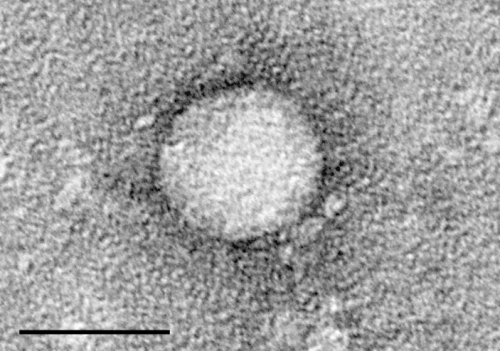
A number of new, highly effective oral treatments for various types of hepatitis C have been approved in the past few years. However, two groups who have not benefitted from the new treatments are patients with hepatitis C who have advanced liver disease and patients who have received a liver transplant but the advanced liver disease has returned because of hepatitis C.
“The problem for these patients is that unless the hepatitis C is cured, the virus continues circulating in their blood infecting the new liver, usually within a few months of transplant. One-third of them have cirrhosis again within five years,” explained Fred Poordad, M.D., clinical professor of medicine and chief of hepatology at The University of Texas Health Science Center at San Antonio.
“This puts these patients back at high risk of dying from chronic hepatitis C or liver disease,” said Dr. Poordad, principal investigator of the ALLY-1 study, who presented the results April 25 at The International Liver CongressTM of the European Association for the Study of the Liver (EASL) in Vienna, Austria.
The Phase III clinical trial evaluated a 12-week course of daclatasvir – the new drug being evaluated – combined with sofosbuvir and ribavirin for patients with chronic hepatitis C. Patients accepted into the trial either had a liver transplant with returning hepatitis C or had hepatitis C with advanced cirrhosis (scarring of the liver).
Study results showed an overall cure rate of 94 percent for patients with a liver transplant and returning hepatitis C, and 83 percent for patients with advanced cirrhosis.
The study’s primary endpoints also were reached, with 95 percent of post-transplant genotype 1 patients and 82 percent of genotype 1 patients with advanced cirrhosis being cured 12 weeks after treatment. Patients with other genotypes of the disease were enrolled as well, with benefits seen in all groups.
Genotypes are subgroups or strains of a disease, such as hepatitis C. There are many subtypes of hepatitis C based on the geographic regions where the strain is most prevalent. Over time, each strain evolved differently so that treatments are based on the genotype of the disease. For example, genotype 1 is the type of hepatitis C most common in the United States and is the most difficult to treat.
The study regimen was well tolerated and showed few serious side effects. “Transplant patients take a variety of medications to prevent organ rejection that can complicate the treatment of hepatitis C. In ALLY-1, we saw no drug-to-drug interactions between transplant and hepatitis C therapies and no need to make close adjustments to patients‘ transplant-related drugs while they received the hepatitis C regimen,” Dr. Poordad said.
The ALLY-1 study was conducted at five major transplant centers in San Antonio and Houston, Texas; Miami, Fla.; Ann Arbor, Mich., and Seattle, Wash.
Hepatitis C is a liver disease found worldwide that is spread though contact with blood or semen, such as shared drug injection needles, inadequate sterilization of medical equipment, unscreened blood and blood products, accidental needle sticks in the health profession, and sexual intercourse with a person who has hepatitis C. The disease also can be passed from mothers to their children through the birthing process.
According to the U.S. Centers for Disease Control and Prevention, 3.2 million people in the U.S. have chronic hepatitis C, and 70 to 80 percent do not have symptoms. Nonetheless, it is a serious disease that can lead to long-term health problems such as liver damage, liver failure, liver cancer and death. It is often discovered later, after significant liver damage has occurred.
In the U.S., people born between 1945 and 1965 have the highest risk of hepatitis C due to higher drug use. People in this age group are urged to have a one-time blood test for hepatitis C to detect the virus and begin receiving treatment, if necessary, before significant liver damage occurs. There is no vaccine to prevent hepatitis C.
Daclatasvir, a drug developed by Bristol-Myers Squibb, was approved in Europe in 2014 for use with other medications for genotypes 1 through 4 for the treatment of chronic hepatitis C in adults. It is also approved in Japan as well as many countries in Central and South America, the Middle East and Asia Pacific. Daclatasvir regimens also have been included in the EASL’s recommendations for the treatment of hepatitis C in Europe.
The U.S. Food and Drug Administration is reviewing daclatasvir for possible approval in the United States.
Source: Study results promising for hepatitis C patients awaiting or completing liver transplant






